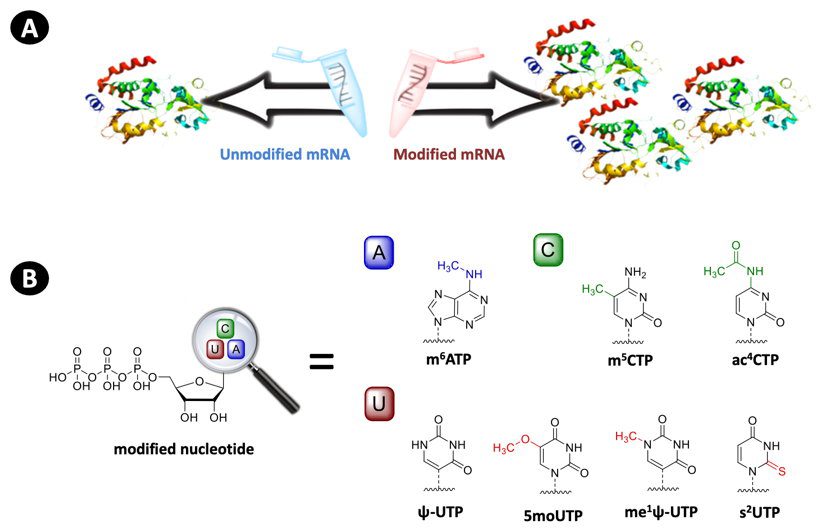5’-capping and nucleoside base modifications significantly increase translation efficiency while reducing immunogenicity of synthetic mRNA (Fig. 1)[1-16].
Such modifications are conveniently introduced by correspondingly modified nucleotides via T7 RNA polymerase-mediated in vitro transcription (Fig. 1B, Tab. 1).

